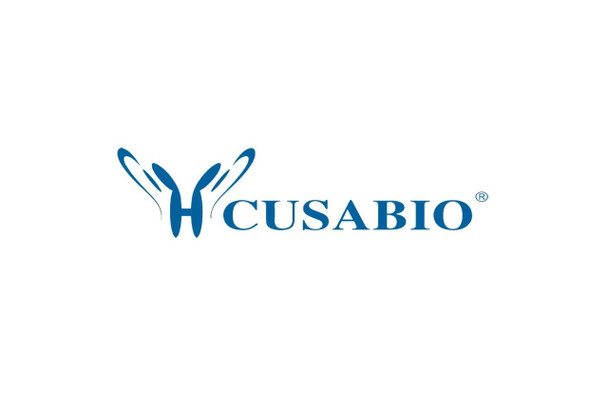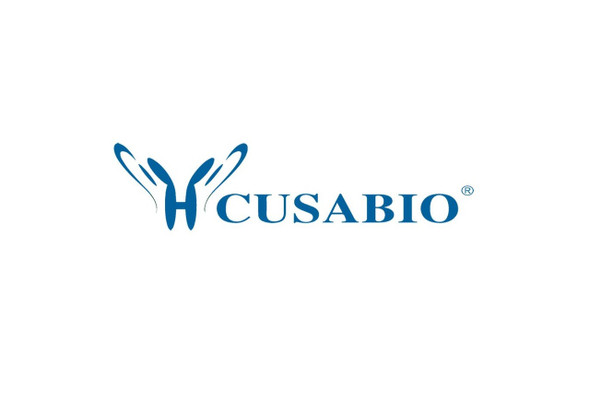Cusabio Human Recombinants
Recombinant Human Josephin-1 (JOSD1) | CSB-EP624012HU
- SKU:
- CSB-EP624012HU
- Availability:
- 13 - 23 Working Days
Description
Recombinant Human Josephin-1 (JOSD1) | CSB-EP624012HU | Cusabio
Alternative Name(s): Josephin domain-containing protein 1
Gene Names: JOSD1
Research Areas: Cell Biology
Organism: Homo sapiens (Human)
AA Sequence: MSCVPWKGDKAKSESLELPQAAPPQIYHEKQRRELCALHALNNVFQDSNAFTRDTLQEIFQRLSPNTMVTPHKKSMLGNGNYDVNVIMAALQTKGYEAVWWDKRRDVGVIALTNVMGFIMNLPSSLCWGPLKLPLKRQHWICVREVGGAYYNLDSKLKMPEWIGGESELRKFLKHHLRGKNCELLLVVPEEVEAHQSWRTDV
Source: E.coli
Tag Info: N-terminal 6xHis-SUMO-tagged
Expression Region: 1-202aa
Sequence Info: Full Length
MW: 39.2 kDa
Purity: Greater than 90% as determined by SDS-PAGE.
Relevance: Deubiquitinates monoubiquitinated probes (in vitro). When ubiquitinated, cleaves 'Lys-63'-linked and 'Lys-48'-linked poly-ubiquitin chains (in vitro), hence may act as a deubiquitinating enzyme. May increase macropinocytosis and suppress clathrin- and caveolae-mediated endocytosis. May enhance mbrane dynamics and cell motility independently of its catalytic activity.
Reference: The DNA sequence of human chromosome 22.Dunham I., Hunt A.R., Collins J.E., Bruskiewich R., Beare D.M., Clamp M., Smink L.J., Ainscough R., Almeida J.P., Babbage A.K., Bagguley C., Bailey J., Barlow K.F., Bates K.N., Beasley O.P., Bird C.P., Blakey S.E., Bridgeman A.M. , Buck D., Burgess J., Burrill W.D., Burton J., Carder C., Carter N.P., Chen Y., Clark G., Clegg S.M., Cobley V.E., Cole C.G., Collier R.E., Connor R., Conroy D., Corby N.R., Coville G.J., Cox A.V., Davis J., Dawson E., Dhami P.D., Dockree C., Dodsworth S.J., Durbin R.M., Ellington A.G., Evans K.L., Fey J.M., Fleming K., French L., Garner A.A., Gilbert J.G.R., Goward M.E., Grafham D.V., Griffiths M.N.D., Hall C., Hall R.E., Hall-Tamlyn G., Heathcott R.W., Ho S., Holmes S., Hunt S.E., Jones M.C., Kershaw J., Kimberley A.M., King A., Laird G.K., Langford C.F., Leversha M.A., Lloyd C., Lloyd D.M., Martyn I.D., Mashreghi-Mohammadi M., Matthews L.H., Mccann O.T., Mcclay J., Mclaren S., McMurray A.A., Milne S.A., Mortimore B.J., Odell C.N., Pavitt R., Pearce A.V., Pearson D., Phillimore B.J.C.T., Phillips S.H., Plumb R.W., Ramsay H., Ramsey Y., Rogers L., Ross M.T., Scott C.E., Sehra H.K., Skuce C.D., Smalley S., Smith M.L., Soderlund C., Spragon L., Steward C.A., Sulston J.E., Swann R.M., Vaudin M., Wall M., Wallis J.M., Whiteley M.N., Willey D.L., Williams L., Williams S.A., Williamson H., Wilmer T.E., Wilming L., Wright C.L., Hubbard T., Bentley D.R., Beck S., Rogers J., Shimizu N., Minoshima S., Kawasaki K., Sasaki T., Asakawa S., Kudoh J., Shintani A., Shibuya K., Yoshizaki Y., Aoki N., Mitsuyama S., Roe B.A., Chen F., Chu L., Crabtree J., Deschamps S., Do A., Do T., Dorman A., Fang F., Fu Y., Hu P., Hua A., Kenton S., Lai H., Lao H.I., Lewis J., Lewis S., Lin S.-P., Loh P., Malaj E., Nguyen T., Pan H., Phan S., Qi S., Qian Y., Ray L., Ren Q., Shaull S., Sloan D., Song L., Wang Q., Wang Y., Wang Z., White J., Willingham D., Wu H., Yao Z., Zhan M., Zhang G., Chissoe S., Murray J., Miller N., Minx P., Fulton R., Johnson D., Bemis G., Bentley D., Bradshaw H., Bourne S., Cordes M., Du Z., Fulton L., Goela D., Graves T., Hawkins J., Hinds K., Kemp K., Latreille P., Layman D., Ozersky P., Rohlfing T., Scheet P., Walker C., Wamsley A., Wohldmann P., Pepin K., Nelson J., Korf I., Bedell J.A., Hillier L.W., Mardis E., Waterston R., Wilson R., Emanuel B.S., Shaikh T., Kurahashi H., Saitta S., Budarf M.L., McDermid H.E., Johnson A., Wong A.C.C., Morrow B.E., Edelmann L., Kim U.J., Shizuya H., Simon M.I., Dumanski J.P., Peyrard M., Kedra D., Seroussi E., Fransson I., Tapia I., Bruder C.E., O'Brien K.P., Wilkinson P., Bodenteich A., Hartman K., Hu X., Khan A.S., Lane L., Tilahun Y., Wright H.Nature 402:489-495(1999)
Storage: The shelf life is related to many factors, storage state, buffer ingredients, storage temperature and the stability of the protein itself. Generally, the shelf life of liquid form is 6 months at -20?/-80?. The shelf life of lyophilized form is 12 months at -20?/-80?.
Notes: Repeated freezing and thawing is not recommended. Store working aliquots at 4? for up to one week.
Function: Deubiquitinates monoubiquitinated probes (in vitro). When ubiquitinated, cleaves 'Lys-63'-linked and 'Lys-48'-linked poly-ubiquitin chains (in vitro), hence may act as a deubiquitinating enzyme. May increase macropinocytosis and suppress clathrin- and caveolae-mediated endocytosis. May enhance membrane dynamics and cell motility independently of its catalytic activity.
Involvement in disease:
Subcellular Location: Cell membrane, Cytoplasm
Protein Families:
Tissue Specificity:
Paythway:
Form: Liquid or Lyophilized powder
Buffer: If the delivery form is liquid, the default storage buffer is Tris/PBS-based buffer, 5%-50% glycerol. If the delivery form is lyophilized powder, the buffer before lyophilization is Tris/PBS-based buffer, 6% Trehalose, pH 8.0.
Reconstitution: We recommend that this vial be briefly centrifuged prior to opening to bring the contents to the bottom. Please reconstitute protein in deionized sterile water to a concentration of 0.1-1.0 mg/mL.We recommend to add 5-50% of glycerol (final concentration) and aliquot for long-term storage at -20?/-80?. Our default final concentration of glycerol is 50%. Customers could use it as reference.
Uniprot ID: Q15040
HGNC Database Link: HGNC
UniGene Database Link: UniGene
KEGG Database Link: KEGG
STRING Database Link: STRING
OMIM Database Link: OMIM










